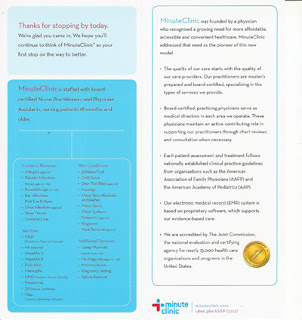Good article from Peter Neupert of Microsoft who testified in front of the Senate last week and the one sentence that grabs it all is this:
“Smart people, armed with software, can do incredible things with data in any format – so long as they can get to it.”
That’s right, let some of us smart folks go to work and create the interoperable system! The problem as I see it is that there are people in positions that don’t understand data, how it works, and how interoperability can be accomplished, and thus everything comes to a screeching halt. I agree and have said it many times to create one big data base and system is ludicrous, not to mention the time and money it would take. ![]()
He mentions HealthVault and that is a good example when you look at the many platforms it works with. I did my own small integration process years ago which was small and simple, but gave me the beginning steps I needed to comprehend and understand the process, which are far more sophisticated and capable today than what I worked with.
I did my own visit to a local Minute Clinic in Orange County over a year ago and had a very nice tour when they were just getting started and yes they  had a complete electronic medical records system that was pretty impressive. While you are there in the store, have your pharmacy records put in your HealthVault too.
had a complete electronic medical records system that was pretty impressive. While you are there in the store, have your pharmacy records put in your HealthVault too.
No doubt we can certainly used some “Congressional Algorithms” to get things moving. One thing I’ll mention again too, the best way to understand PHRs is to go get one, it is a consumer product.
Back to the big picture in the related reading below you can see a number of posts related to this topic and it is not only healthcare that is suffering from lack of technology, so is the FDA, the SEC, and read what the Obama group had to deal with at the White House. The technology and availability has been around for quite a while and keeps getting better every day, it has just been a matter of choice and lack of education, and to the point where other countries are beginning to eat our lunch, and the quality of healthcare and the information processes are suffering over all talk and little or no action.
As the deluge of information continues to grow, there is not a paper system that can handle the flow like software does, something we all need to come to terms with soon before we all go crazy. Stay tuned as I hear next week there will be more testimonies in Congress, this time related to Security with software and other items. BD
Some who view this seemingly humble list of achievements will say that we can’t do it, because the standards aren’t ready, or the data is too complex. They’ll say that delays are necessary, due to worries about privacy or because too much data is still on paper.
We disagree. We believe that where there’s a will, there is going to be a way.
There’s already a proven model for extracting and transforming data in many ways – HL7 feeds, non-HL7 feeds, web services, database replication, XML and XSLT, and more – and along the way we can create value by interpreting the data and adding metadata. Microsoft is doing it today– both in the enterprise with Amalga and and across enterprises to the consumer with HealthVault. We hope other vendors follow this lead to drive better outcomes for patients.
It’s possible for vendors to provide value without the need for lock-in. There are lots of examples of this, for example, the Health Information Exchange in Wisconsin and CVS MinuteClinic. In the former, value is clearly being added immediately to users in the ED, without requiring all the participating EDs to change their systems or to be standards compliant (or CCHIT certified). At MinuteClinics, summary after-visit health data are made available to customers online using the Continuity of Care Record standard. This is where the low hanging fruit is.
Related Reading:
CVS/Caremark join the Generic Discount Club – Connect information to Personal Health Record Accounts
CVS to Offer Records Via HealthVault
Minute Clinic Visit - Huntington Beach, CA
3D Multi Touch Application for Heart Surgeries – Microsoft Surface and HealthVault
Investing in Health IT: US Senate Testimonies



0 comments :
Post a Comment